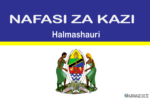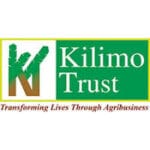AboutVocational Education and Training Authority (VETA)
The Vocational Education and Training Authority (VETA) is an autonomous Government Agency established under the Vocational Education and Training Act, Chapter 82 charged with the duties of providing, financing and coordinating vocational education and training in the country.
Roles Of VETA
i. Providing vocational education and training;
VETA provides training through its centres spread throughout the country. Vocational Teachers are trained through its specialised college the Morogoro Vocational Teachers Training College (MVTTC)
ii. Facilitating Financial Support for Vocational Training
VETA facilitates financial support for vocational training through funds from the Skills Development Levy (SDL). The source of SDL is private sector employers’ contribution deducted from employees’ salaries. Other sources of funds are Government development projects; development partners’ contributions; funds from internal sources like income generating activities and training fees.
iii. Promoting of Vocational Educational and Training
VETA is charged with the role of promoting vocational education and training in the country. VETA believes that the public can support VET if it is provided with adequate information about VET goals and activities. Promotion is carried by communicating VET to different stakeholders including the government, parents, employers, employees, and donors. Also, current and prospective trainees, instructors, VET graduates legislators, trade unions, NGOs and the media.
VETA uses different media in communicating VET to stakeholders: through media engagement, advertising, VET Week activities, public presentations, trade fairs, and exhibitions. Others include newsletters, annual reports, brochures, VET catalogues, website and other promotional materials.
Training Provision
VETA training programmes are organized in thirteen occupational sectors namely, Mechanical; Electrical; Civil and Building Engineering; Automotive; Commercial Services and Business Support; Clothing and Textile; Transport; Mining; Printing; Cosmetology; Agriculture and Food Processing; and Hospitality, Tourism and Travel Agency and Fine and Performing Arts.
Institutional Arrangement
VETA is governed and managed by the Vocational Education Training Board (VET BOARD)
On establishment of VETA, a Vocational Education and Training Board was put in place to govern the whole VET system. It is a policy development organ responsible for the performance of the functions and management of the affairs of the Authority.
The VET Board is composed of eleven members with Chairperson appointed by the President and other members appointed by the Minister responsible for Vocational Education and Training. Ten other members are appointed by the Minister upon being nominated as follows:
i. Two members to be nominated by the organisations for the time being representing employers;
ii. Two members to be nominated by trade unions movements (to represent employees);
iii. Three members to be nominated by each of the ministries responsible for industries, education, and labour;
iv. Three members to be nominated by non-governmental organisations which manage vocational education and training institutions.
Members to be nominated and appointed members of the Board shall be those who are qualified to contribute to the development of vocational education and training.
The appointed board members are expected to hold office for three years, after which they may be eligible for re-appointment.
2. Trade Advisory Committees (TACs)
Section 8 of the VET Act provides for the establishment of Trade Advisory Committees. Trade Advisory Committees with experts from the labour market are technical arms of the Board responsible for approving training standards and curriculum.
Composition
a) One represents the interests of vocational education and training institutions;
a) One represents the interests of vocational education and training institutions;
b) One is a training specialist appointed by the Board;
c) Two are representatives of employers/industry;
d) Two are representatives of workers in the industries concerned;
The Board shall appoint one of their members to be the chairman of the TAC.
a) Every member of the committee shall, unless he/she sooner resigns or otherwise ceases to hold office, hold office for a period of three years and may be eligible for re- appointment;
b) Subject to any general or specific directions by the Board and subject further to the provisions of the Act or any regulations made under it, the committee may regulate its own proceedings;
c) A representative of the Director shall act as the secretary to any committee established under this section.
Responsibilities and Functions
TACs are responsible for ensuring that vocational education and training programmes offered are according to the needs and demands of the employment market.-
TACs perform the following functions:–
a) Advise the Board on the establishment of new vocational trades training and educational programmes or on the abolition of existing ones;
b) Assess training needs and determine standards for the area of trades the committee is covering;
c) To draw up training specifications and job description for the trades to be taught;
d) To ensure coordination with related trade training activities;
e) To approve log-books and trade testing standards for the trades related to its activities;
f) To ensure that the employment market is informed about training activities under the committees to promote placements for students; and
g) To form sub – committees to work with particular training issues as may be necessary.
Thirteen (13) Trade Advisory Committees have been established for the following sectors:-
i. Mechanical
ii. Electrical
iii. Civil and Building Engineering
iv. Automotive
v. Commercial and Business support
vi. Clothing and Textile
vii. Transport
viii. Extractive Industry
ix. Printing
x. Cosmetology
xi. Agriculture and Food Processing
xii. Hospitality, and Tourism and Travel Agency
xiii. Fine and Performing Arts
4. Director General
The Director General is the Chief Executive of the Authority and is directly responsible to the Board for the day to day administration of the affairs of the Authority. The Board after consultations with the Minister appoints the Director General of the Authority on such terms and conditions as the Board may determine.
5. Directorates of the Authority
Currently, VETA is managed through five (5) Directorates:
i. Directorate of Labour Market, Planning and Development;
ii. Directorate of Vocational Education and Training;
iii. Directorate of Assessment and Certification;
iv. Directorate of Human Resources and Administration and;
v. Directorate of Finance.












